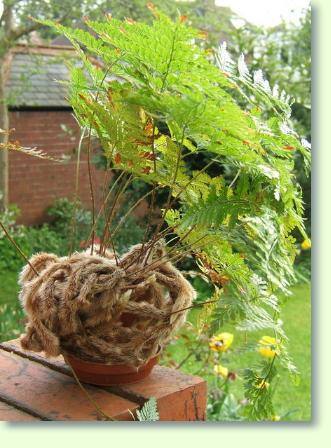Hare's Foot Fern
A delicate fern native to the Mediterranean region with thick fleshy aerial roots which grow are covered with reddish fibres
Denise Bush
Martes, 17 de enero 2017, 09:52
Davallia canariensis (synonym Trichomanes canariensis) is an epiphyte fern native to the west Mediterranean region, the Canary Islands and Madeira. Common names include the Hare's Foot Fern and Shinobu Fern although they tend to be used for the genus as a whole, not just for the particular species canariensis. In Spanish it is called Helecho Pata de Conejo or Carraguala and in Andalucía is protected in the wild.
The genus is named after the Swiss botanist Edmund Davall and the species 'canariensis' is after the Canary Islands although it is found in other regions.
The Hare's Foot Fern grows to between 40 and 60cm tall and has finely-divided fronds which can grow up to 40cm long. It is best grown in a container that is wider than it is deep as the feature that makes this fern particularly attractive is its aerial roots. The fleshy rhizomous roots are covered with reddish fibres hence the name 'hare's foot' and will spread over the surface of a pot and down the sides. Eventually the pot will be completely encased.
In the wild, Hare's Foot Ferns grow on trees and wrap their aerial roots around the trunk to absorb water. This fern also looks spectacular in a hanging basket where the rhizomes can dangle down.
Like most ferns, the Hare's Foot Fern needs shade and moisture. A north-facing spot would be ideal. During the summer, the fronds will need misting regularly with rain water or water that has boiled and has been left to cool. It is not drought resistant and as soon as the surface of the compost dries out, the whole plant should be submerged in a bucket of tepid water. It is not frost hardy.
Propagation can be carried out when repotting which is best done in the spring. Lengths of the rhizomes can be snipped off and laid horizontal on the surface of a pot filled with a mixture of compost and sand. The rhizomes are slow to root, though, and may take a couple of months.
